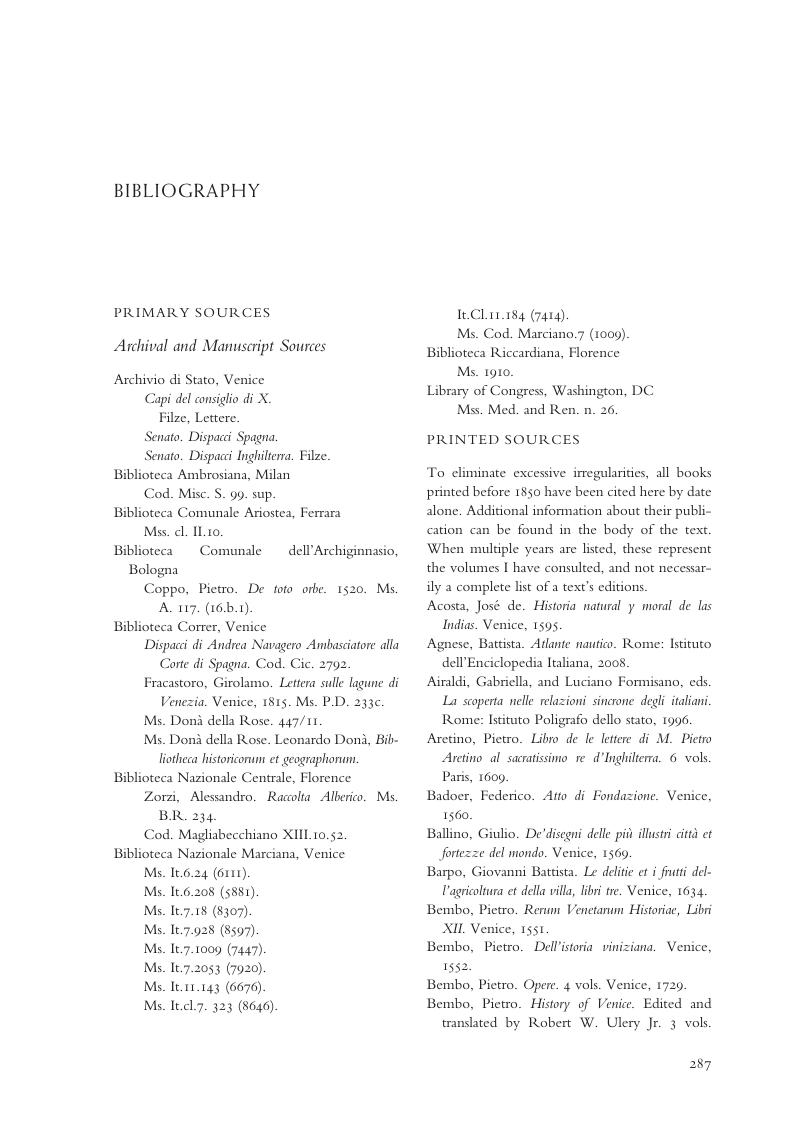Book contents
- The Venetian Discovery of America
- The Venetian Discovery of America
- Copyright page
- Dedication
- Contents
- Figures
- Acknowledgments
- One Introduction
- Two Compiled Geographies
- Three Giovanni Battista Ramusio’s Venetian New World
- Four The Venetian Mapping of the Americas
- Five Venetians in America
- Six Venice as Tenochtitlan
- Conclusion
- Notes
- Bibliography
- Index
- References
Bibliography
Published online by Cambridge University Press: 08 September 2018
- The Venetian Discovery of America
- The Venetian Discovery of America
- Copyright page
- Dedication
- Contents
- Figures
- Acknowledgments
- One Introduction
- Two Compiled Geographies
- Three Giovanni Battista Ramusio’s Venetian New World
- Four The Venetian Mapping of the Americas
- Five Venetians in America
- Six Venice as Tenochtitlan
- Conclusion
- Notes
- Bibliography
- Index
- References
Summary

- Type
- Chapter
- Information
- The Venetian Discovery of AmericaGeographic Imagination in the Age of Encounters, pp. 287 - 312Publisher: Cambridge University PressPrint publication year: 2018



